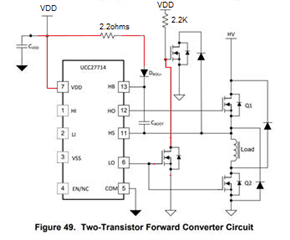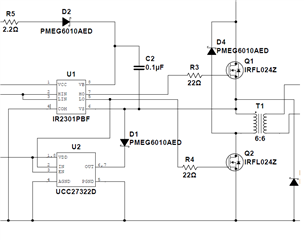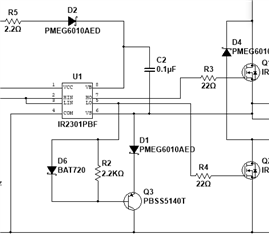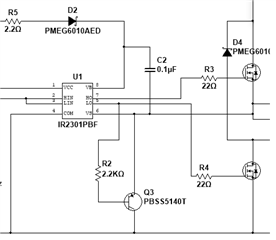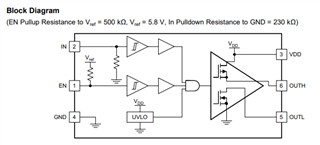Other Parts Discussed in Thread: LM5112, UCC27322, UCC27532
In Figure 49 of the data sheet for the UCC27714, an application for the device in a two-switch forward converter is shown. Whereas I agree with the general concept the author was trying to convey, the implementation of the concept per the figure is poor.
In Figure 49 of this application note, the Rboot resistor is in the drain lead of the signal switching MOSFET on the bottom -
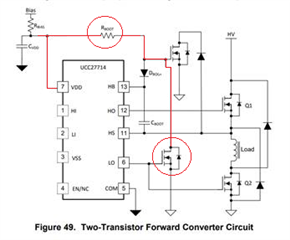
Typically, the Rboot resistor (if used) is 2.2 to 10 ohms or so. When the lower signal MOSFET turns on when the LO output from the UCC27714 goes active, to cut off the second MOSFET which is providing the ground path for Cboot, the lower MOSFET promptly blow up with a dissipation in excess of 12W and Rboot, with catching fire. Good times!
I have redesigned the circuit, and used an alternate controller IC (which is available from stock) and it works fine but I would not build it as it was described in the application note.


